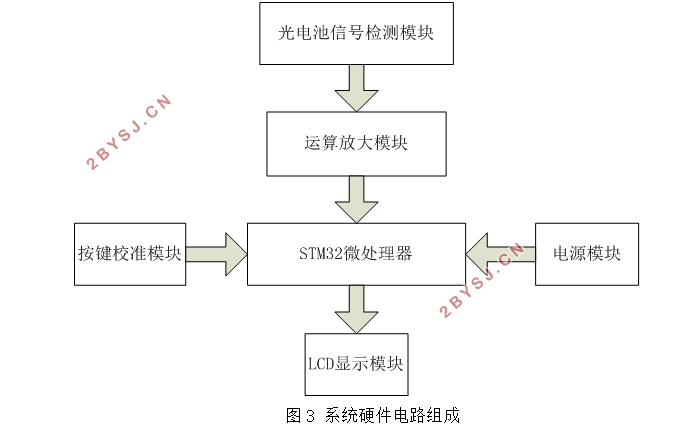便携式光泽度计设计
无需注册登录,支付后按照提示操作即可获取该资料.
便携式光泽度计设计(论文11000字)
摘要:社会的发展离不开科学技术的不断创新。光泽度作为在涂料行业、汽车工业以及电子电器等行业广泛使用的,用于表明物体表面反射光的能力的测量标准,越来越受到重视,发展迅速。本设计研究一种便携式光泽度测量工具,主要用于各类平整物体表面或者图层的光泽度测量。以STM32F103作为微控制中心,使用Nokia5110LCD液晶显示屏显示具体测量得到的数值。该设计能够实现对物体表面进行实时精准测量,液晶显示屏能够准确显示物体表面所测得的光泽度数值。实际设计中,会利用光电池进行反射光的采集,经过ICL7650运算放大器对信号的放大,然后将信号输入单片机内置AD进行数模转换,经过运算处理将结果输出到LCD显示屏上。其中利用光泽度仪标准工作板作为校准工具,以保证结果准确。
关键词:光泽度测量;STM32F103;ICL7650运算放大器;Nokia5110LCD显示屏
A portable glossiness measuring instrument design
Abstract:Thedevelopment of technology will lead to the progress of the society. Glossiness is extensively used as the measurement standard in the paint industry, car industry and electronic equipment industry, and becoming more and more important due to the rapid development.This design studies a portable glossiness measurement that will be applied on all kinds of smooth material’s surfaces or paint-coat. Thisdesign will be able to do the real-time measurement, andthe LCD will display the numerical value accurately. During the actual design procedure, we use photocell to transform the reflected light into electric signal, and use the operational amplifier chip to enhance the signal, then use the built-in A/D conversion on the MCU to convert it into digital signal, which will be processed as result to be displayed on the displayer eventually. The standard glossiness working board will be used to make sure the accuracy of the measurementresult.
Keywords:glossiness measurement;STM32F103;ICL7650 operational amplifier;nokia5110 LCD displayer

目录
1 前言 1
1.1研究背景及意义 1
1.2具体研究内容以及论述方案 2
2 硬件系统设计 2
2.1 光泽度测量原理 2
2.2 系统电路组成 3
2.3 ARM芯片的选择 4
2.3.1 ARM体系 5
2.3.2 STM32微处理器 5
2.3.3 STM32F103RBT6微处理器 6
2.4 外围电路设计 6
2.4.1 电源模块 6
2.4.2 ICL7650运算放大电路模块 7
2.4.3 Nokia5110 LCD显示模块 8
2.5 章节小结 9
3 软件设计 9
3.1软件程序开发平台 9
3.2 主程序设计 9
3.2.1 主程序执行流程图 10
3.2.2光泽度值计算原理 11
3.3 按键校准程序设计 11
3.4 LCD显示子程序 12
4 系统调试结果与分析 13
4.1 光泽度计调试校准 13
4.2在实际测量中的应用 14
5 总结 14
参考文献 15
致谢 17
